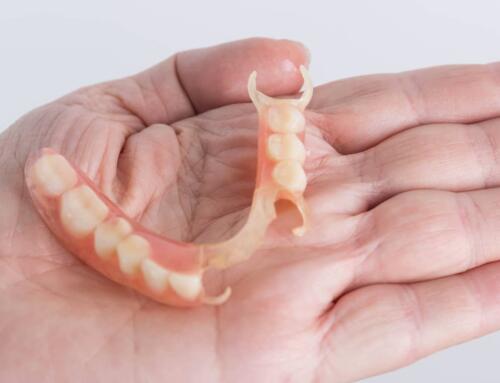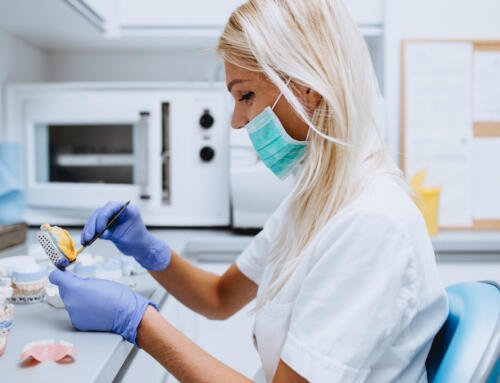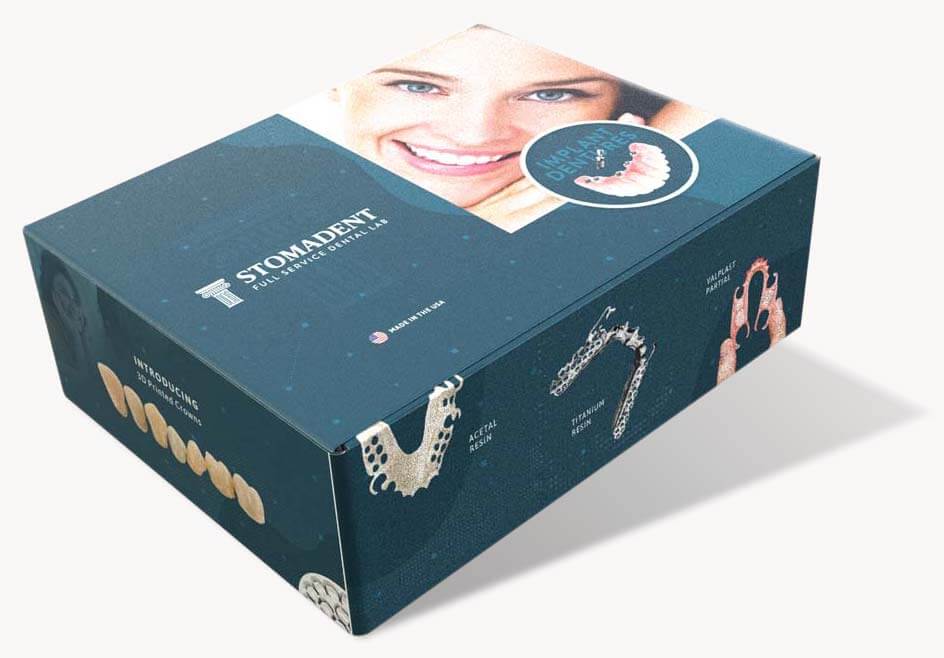
By David Hudnall, DMD
While the mention of partial dentures usually conjures up an image of a removable appliance for most people, the truth is that upper partial dentures may be divided into two basic types of partial dentures: removable partial dentures and fixed partial dentures.
Both can provide viable options for replacing missing teeth and restoring aesthetics and function for remaining teeth.
Upper Partial Dentures: The Basics
In dentistry, it is important to know your patient first. This always includes performing a thorough review of the patient’s medical history, the conditions that they currently have or have experienced in the past, and the medications that are being used to treat any medical conditions. Since fabrication and delivery of fixed partial dentures often involve “invasive” procedures likely to induce bleeding, including the placement of a retraction cord for impressions, this must be taken into consideration when creating a treatment plan to replace missing teeth.
On the other hand, while removable partial denture fabrication sometimes involves selective modification of the natural tooth shape in order to create guide planes or rest seats that help with insertion or positive seating, the treatment itself almost never induces bleeding. There is never a medical barrier to removable partial dentures, even for the most medically-compromised individuals.
Advantages of Upper Partial Dentures
Upper partial dentures offer a cost-effective method for replacing missing teeth, restoring functionality, and improving the patient’s overall appearance. Compared with fixed bridgework or implant-supported restorations, upper partial dentures are a fraction of the cost. Removable partial dentures are artificial teeth that are usually within the financial reach of most patients.
Removable vs Fixed Dentures: Clinical Considerations
A number of factors must be considered when prescribing tooth replacement alternatives to patients. These include the clinical condition of not only the remaining natural teeth but also the occlusion and wear of the dentition. In some cases, teeth that have periodontal issues, have shifted, or have super-erupted require extraction or additional treatment (i.e., periodontal management, endodontic therapy, or orthodontics) in order for a fixed or removable partial denture to be placed and function properly.
Removable upper partial dentures can be considered a reversible treatment option that acts as a starting point for better dental health, improved chewing and digestion, and a full complement of teeth. When a patient chooses removable partial dentures, their choice does not exclude them from receiving a more permanent treatment solution in the future.
Upper partial dentures prevent shifting and super-eruption of natural teeth. They also provide a stepping stone for patients who aspire to have fixed partial dentures that function more like natural teeth, provide greater comfort, and are highly aesthetic.
Types of Upper Partial Dentures and Applications
There are really four different types of removable partial dentures commonly used in dentistry. The first is acrylic partial dentures with wrought wire clasps. Because its fit is somewhat imprecise but is easily adjusted, an acrylic partial is best employed as a temporary appliance for immediate tooth replacement after extractions.
With that out of the way, let’s discuss the three other types of upper partial dentures that are designed for longer-term use and improve oral health.
Cast-Metal Removable Partial Dentures
Cast-metal partial dentures really are the Cadillac of all removable partial dentures. With the rigidity of non-flexible metal and edentulous saddles covered with acrylic resin to support the denture teeth, they are durable and suitable for use with all types of tooth configurations, including bilateral free-end applications. Because of the hardness of the metal, upper partial dentures made with either an anterior-posterior bar design or horseshoe palate improve the patient’s temperature proprioception and taste perception.
Over the years, cast metal partial dentures have been modified and improved upon to address concerns, including allergies to metals or acrylic monomers. Titanium is the most biocompatible metal known to man and is the same material used in joint replacements and dental implants. Virtually no one is allergic to titanium. Metal frameworks made from titanium eliminate the concern for metal allergies related to alloys that contain nickel or other metal components.
Metal frameworks can also be made to be more aesthetic with tissue-colored saddles and clasps constructed from thermoplastic resins or clasps made from tooth-colored acetal resin that blend with the dentition in visible areas. This allows the patient to experience all of the benefits provided by a rigid and secure partial combined with the visual improvements from clasps that disappear when the partial is seated. This type of hybrid upper partial denture design truly is the best combination of fit, function, and appearance for upper and lower teeth.
Acrylic Clasp Removable Partial Dentures
Upper partials dentures made from Zirlux acetal resin offer the familiar components present in a cast metal partial without the unsightly metal. The traditional metal is replaced, not by acrylic but entirely by acetal resin, available in 16 VITA tooth-colored shades or 3 tissue shades. This allows the framework and clasps to blend seamlessly with almost any dentition, making the partial a much more aesthetic option for your patients.
Acetal resin is a thermoplastic techno-polymer, a chemical compound that has the ability to be softened by heating and processed into shapes using methods including extrusion or injection molding. Once cooled, it hardens into a semi-rigid form and does not display any chemical property changes even after being heated and cooled multiple times.
Acetal resin partial frameworks are milled from pucks formed from pre-processed resin. Because of its low modulus of elasticity, clasps made from acetal resin display greater flexibility and can be used in larger undercuts for improved retention while exerting less stress on the abutment teeth than similar metal clasps.
Because acetal resin absorbs virtually no water, it provides years of service without discoloring or developing odors, even when using denture adhesive. The material is easily adjusted using the same carbide burs used to modify acrylic denture bases. Polishing is accomplished with pumice and a rag wheel. Minor adjustments to resin clasps may be made at chairside by gently heating the clasps with hot air or using pre-warmed pliers.
Flexible Partial Dentures
Flexible upper partial dentures (Valplast or TCS) provide a non-metal removable tooth replacement alternative for patients with a history of acrylic monomer or metal allergies or for patients who object to the presence of visible metal components. In addition to replacing multiple missing teeth on the upper arch, flexible partials are ideal for use as flipper or unilateral partials to replace one or two missing teeth. They also can be used as a temporary dental appliance while healing from implant placement.
Flexible partials do not contain a traditional framework like a fixed partial denture. They receive their support and stability entirely from a uniformly thick thermoplastic nylon baseplate that adapts to the contours of the palate and ridge, making intimate contact with all of the underlying tissue and lingual tooth surfaces. Facial clasps are formed as an extension of the baseplate and are located near the gingival margin of the abutment teeth, making them nearly invisible when the partial is fully seated.
Because of the type of material used and the retention mechanisms, there are contraindications for flexible upper partial dentures. These include collapsed bites where the patient has less than 5 mm of vertical clearance, deep bites where the lower anterior teeth contact the patient’s palate, and severely buccally-inclined posterior teeth.
Upper Partial Dentures: Process
The first consideration is the arrangement and position of the natural teeth as well as the occlusion with the opposing dentition, creating space for the thickness of the framework components. Except in rare situations where the patient’s vertical dimension is designed to be changed by the partial, the natural occlusion should remain unchanged with the partial in or out of the mouth.
Any obstacles to the delivery of the final partial must be overcome with selective sanding to improve the path of insertion and removal. Using a mirror to assess the location of undercuts present will allow the clinician to make appropriate modifications to the natural teeth prior to impressions being captured. This will ensure that the final partial will have adequate retention without becoming locked into place upon delivery.
Guiding Patient Care of Upper Partial Dentures
Special care is required for all types of removable upper partial dentures in order to preserve the integrity of the materials and to keep them looking like new.
Partials should be cleaned over a basin of standing water or several thicknesses of towels to prevent damage caused by accidentally dropping the appliance during handling.
Use a denture brush with water and liquid soap or a commercial paste specially made for cleaning dentures to remove plaque and debris daily.
Never brush the partial while it is seated in the mouth.
Use a soft bristle toothbrush and regular toothpaste to brush natural teeth separately.
Special effervescent cleaners are optional and specifically formulated for each type of upper partial denture. Cast partials may be soaked for freshness using commercial products that say they are designed for metal partials on the label. Zirlux (acetal resin), TCS, and Vaplast (thermoplastic nylon) each have their own cleaning products available for your patients to purchase online.
Using regular denture cleaners repeatedly on resin and thermoplastic products will degrade the material and make the appliances less flexible over time.
Benefit of a Top Dental Lab for Upper Dentures
Top dental labs have more material options available that allow the creation and manufacture of customized upper partial dentures, which address many common patient concerns, including materials and aesthetics. The technicians at Stomadent Dental Lab are highly trained and are certified by the manufacturers of Valplast, TCS, and Zirlux.
They understand how to utilize these materials to achieve the best results with the fewest adjustments possible. Doesn’t your patient deserve an upper partial denture that meets or exceeds all of their needs and expectations?

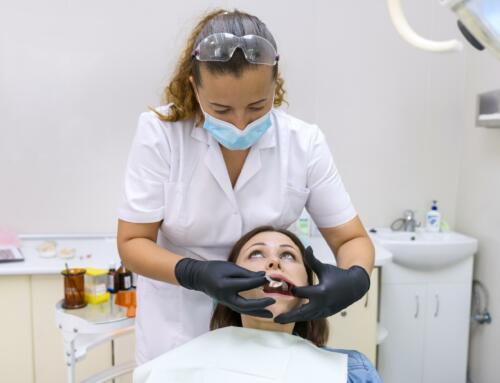
![Partial Denture Clasp Types [Assessing Clinical Situations]](https://stomadentlab.com/wp-content/uploads/2024/03/dental-implant-model-dental-bridge-in-hand-dentis-2023-11-27-05-11-13-utc-scaled-500x383.jpg)
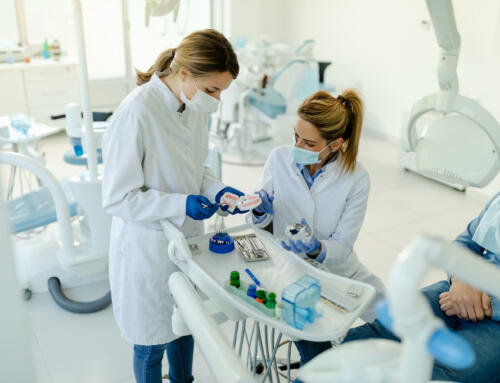
![TCS Flexible Partial vs Valplast [Comparing Denture Options]](https://stomadentlab.com/wp-content/uploads/2024/01/asian-elderly-woman-patient-use-toothbrush-to-clea-2023-11-27-05-03-35-utc-scaled-500x383.jpg)

